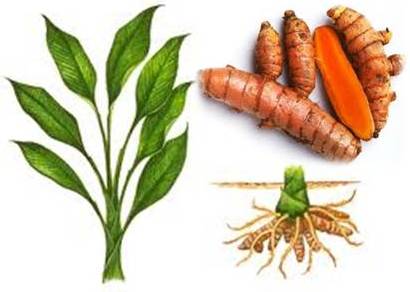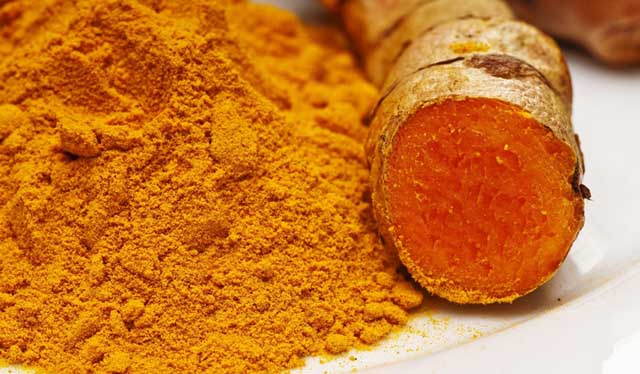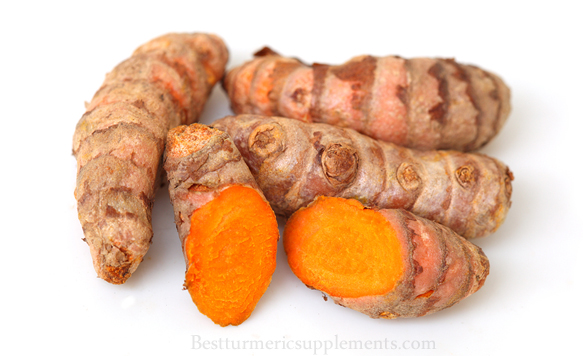What is regular turmeric?
This herbaceous plant grows in the world’s tropical areas like South Africa and India. It is part of the ginger family. When a plant is considered herbaceous, it means that the plant has leaves and stems that are green and has very little wood or bark surface. The roots, or stems, of the plant are ground into a powder to be used as a cooking spice. It is also referred to as Indian Saffron because it dyes food.

Contents
What is organic turmeric?
This turmeric is grown without the use of genetic modification, pesticides, or chemicals, which is known as organic farming. This type of farming uses crop rotation, turning the soil after the crops to make sure the crop is weed free without using pesticides.
Identifying genuine organic turmeric
 The first step in identifying genuine organic turmeric is to see if it has been certified as organic” by a reputed, known third party agency. In the United States any product that is genuine organic will get a United States Department of Agriculture (USDA) certification. When the product has been USDA certified the product is genuine, organic the producer can put a mark on their product that reads “USDA Organic.” This assures you that the product has been tested. Other countries also have agencies that can give the product this certification.
The first step in identifying genuine organic turmeric is to see if it has been certified as organic” by a reputed, known third party agency. In the United States any product that is genuine organic will get a United States Department of Agriculture (USDA) certification. When the product has been USDA certified the product is genuine, organic the producer can put a mark on their product that reads “USDA Organic.” This assures you that the product has been tested. Other countries also have agencies that can give the product this certification.
When it is an organic farm, a Government approved certifier will inspect the farm. This is to make sure the one running the farm is following all of the rules that are necessary to meet USDA organic standards. The companies that process or handle the organic foods and herbs have to be certified.
You should also buy it from a reputable dealer such as a health food store. One easy way to identify organic turmeric as being genuine is to grow it yourself. The plant is a perennial herb that re-grows every spring. It is not hard to grow organic turmeric at home in pots. One of the main requirements is that the soil used should not be water retaining. In a pot seventy-five centimeters long, thirty centimeters deep, and thirty centimeters wide you can plant four plants. Turmeric does not produce seeds so you have to use rhizomes or turmeric roots, which you can get from vegetable shops. The rhizomes you can get from last year’s crops.
You will need small ones with one or two buds. Plant them twenty to twenty-five centimeters apart six to seven centimeters deep. They need to be planted loamy fertile soils that are well drained. In the soil, you should mix some cow manure compost, all purpose fertilizer, and river sand into the soil. After planting, you should see shoots in approximately twenty to forty-five days. You will need to grow fresh plants every year. Keep the plants well-watered after they start too grow.

Why choose organic turmeric?
Although there is nothing wrong with using turmeric that is not organic it could be adulterated. One reason that it could be adulterated is to add dangerous color enhancers or add weight with fillers. Some of the contaminants, or fillers, could be ground wood dust, cadmium, lead, or chromate. They could add metanil yellow to color the wood or chalk filler. Some were contaminated with salmonella.
Organic turmeric uses
When it is used for cooking, it will give your food a slight peppery taste. It is also mixed with other spices to make curry powder. Curry powder is used in Indian cooking. Although the taste is subtle, the bright yellow color is not. It may be added to egg salad or mustard to make them appear a brighter yellow. You can use it in the place of saffron, which is an expensive spice.
Organic turmeric health benefits
It could also help stop the growth of certain cancers, including breast and prostate cancer. The curcumin pigment, which gives the spice its vibrant color has anti-oxidant and anti-inflammatory properties. This spice could help those who suffer from arthritis and Alzheimer’s disease. The curcumin may help to produce bilirubin, which helps to protect your bran from oxidization that could lead to you developing Alzheimer’s.
There are many health benefits in drinking organic turmeric tea. Just add a tablespoon of ground organic turmeric powder to boiling water and let sit for a couple of minutes. Strain the water to get rid of the residual powder. For flavor use a little honey and a dash of lemon.
Where can you find organic turmeric?
Generally, you can find organic turmeric in powdered form at online from Amazon.com or in the spice aisle of a natural food store. They may offer it in bulk where you can measure out the exact amount you want and pay per pound or buy it prepackaged in jars. You can also get organic turmeric in paste, liquid, or capsule form to be used as a medicinal herb.




